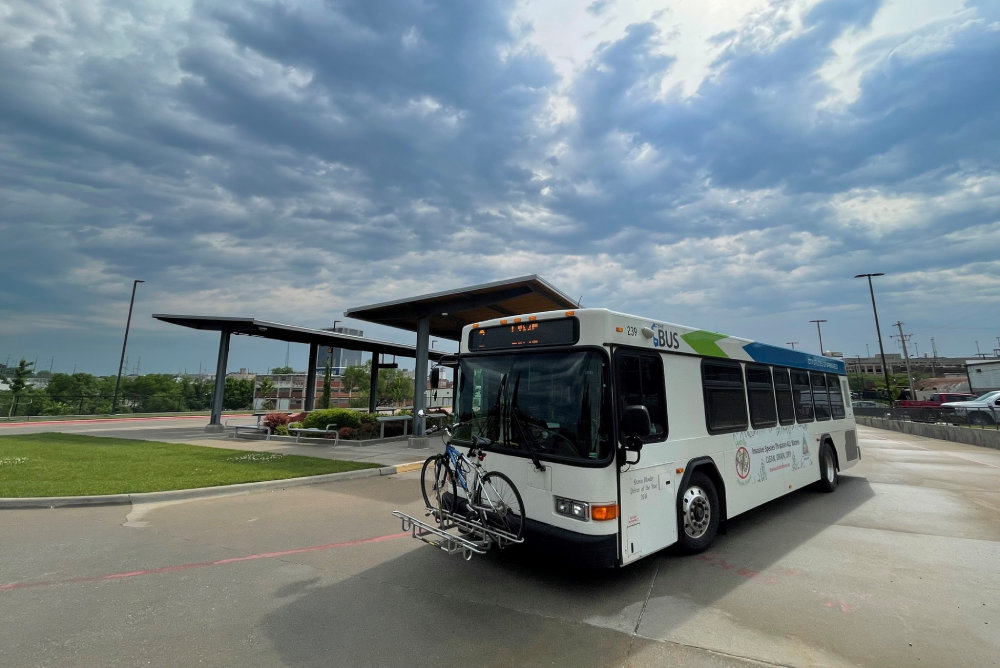YOUR BUSINESS AUTHORITY
Springfield, MO
YOUR BUSINESS AUTHORITY
Springfield, MO

Following a survey of community members, City Utilities is starting to get a clear picture of what Springfield residents want from their community transit system.
Brent Baker, vice president and chief customer officer for CU, gave a presentation to Springfield City Council at a study session Jan. 3.
Baker offered some initial findings of the Connect SGF transit study that is being conducted by engineering and consulting firm Olsson Inc. to evaluate the market and improve services for the city bus lines.
The study includes a market analysis, a detailed review of operations and visioning for the future, Baker said. He added that CU also is taking care to align with the Ozarks Transportation Organization’s Destination 2045 long-range transportation plan and the city’s Forward SGF comprehensive plan.
These six vision statements have arisen from the study, each beginning with the statement “Public transit in Springfield should …”:
Vision No. 4 of integrating a transit perspective in development conversations might mean CU becomes active in Planning & Zoning Commission discussions, Baker said.
“A development will happen, and we’ll get a call to say, ‘Can you move the bus line over that direction to pick up people to get from that place to another place?’” he said. “Could we coordinate the developments that are going to be large population centers or large job centers with public transit a little bit more?”
Ease of use is an idea that Baker related to Amazon’s focus on providing an effortless customer experience, making it easier to use the interface so that now people rely on it regularly.
“It’s hard sometimes to understand how to get around town on the bus system, and we’re aware,” he said. “We need to make that experience easier.”
Customers also want a faster bus system, with ride times that are similar to driving in a personal vehicle.
“That’s pretty tough in public transit, but we can get close,” he said. “If we’re going to aim at world class, we’re going to try to get close.”
The solution would entail more north-south and east-west routes with a greater frequency of stops, he said.
Baker pointed out the idea of expanding the ridership base is popular among survey respondents.
“People do want us to consider the possibility of getting people from Ozark, Nixa, Republic, Willard to Springfield easier without having to deal with the traffic, so that will be part of the study,” he said.
Mayor Ken McClure raised some oversight concerns about a system that expands beyond the borders of the city.
“That does come back, for me, to the issue of governance,” he said.
Gary Gibson, CU’s general manager and CEO, said expansion likely would require a regional transit authority, and CU could serve as a contract operator.
“I really want the study to kind of be a baseline so we can start having those discussions,” he said. “It’s kind of been the elephant in the room that we’ve talked about for years, and I think we probably ought to flesh that conversation out a little bit more.”
The CU transit system has an annual budget of about $12 million per year, Gibson added, with $4 million coming from the federal government and the rest subsidized by electric and natural gas customers.
City Manager Jason Gage said the visions entail big changes in frequency.
“Realistically, it could be a pretty expensive question compared to what it is today,” he said.
Baker said by summer, CU will have a list of short-term, midterm and long-term solutions to pursue, and funding discussions will take place.
Cedars Family Restaurant has cooked up comfort for over three decades.
Aquatic center fronting Sports Town in the works
Spring 2024 Construction in the Ozarks
SPD issues 36 citations to businesses for violating city’s gaming machine ban
Lost & Found Grief Center hires executive director
Nixa spokesperson takes job with city of Joplin